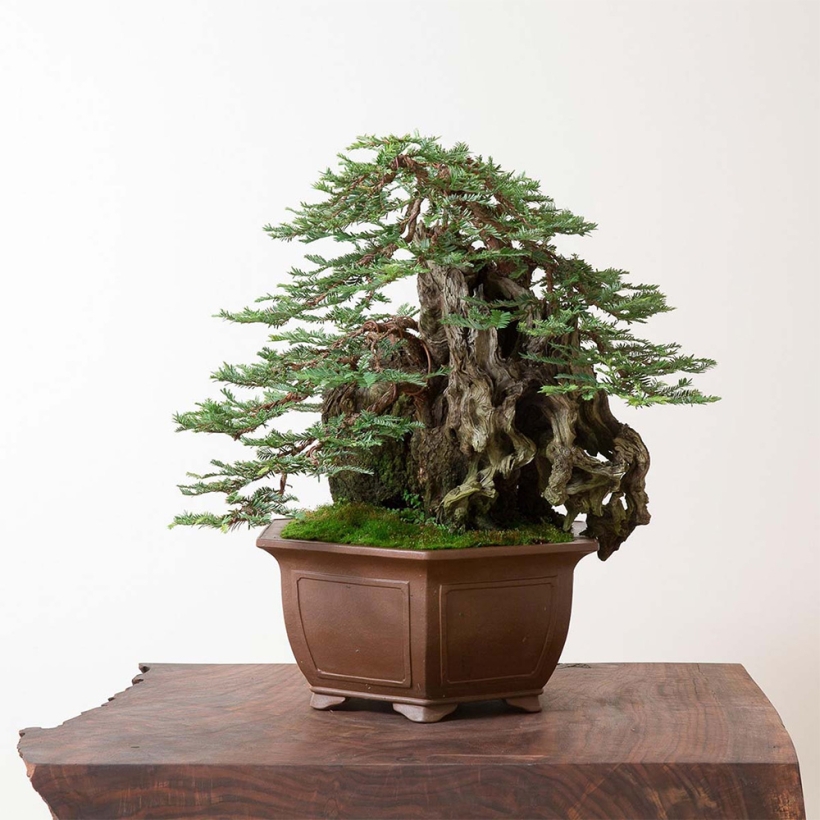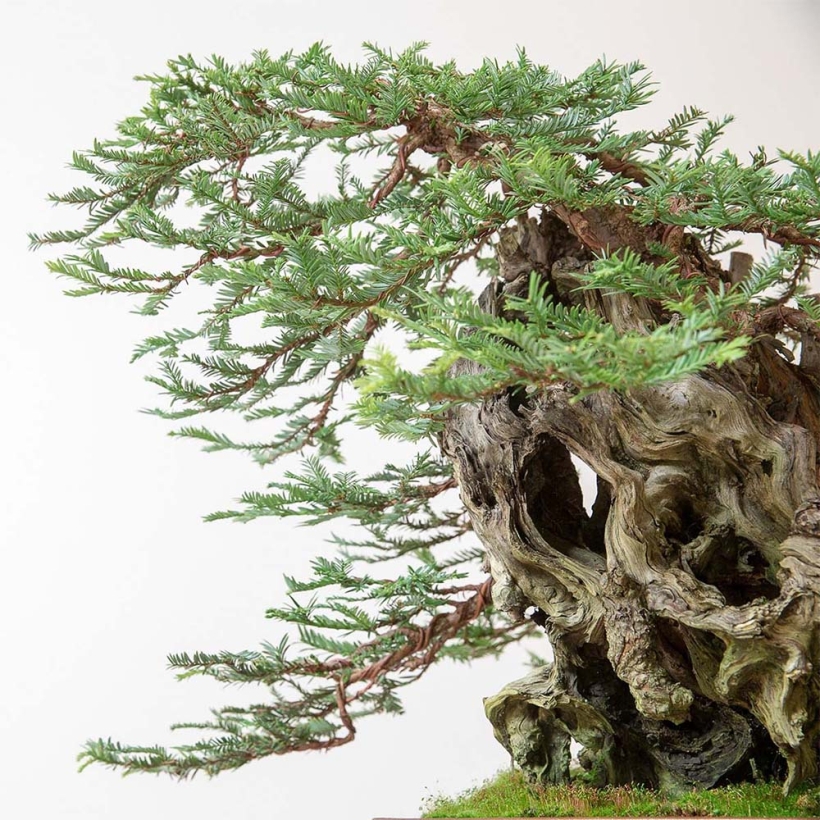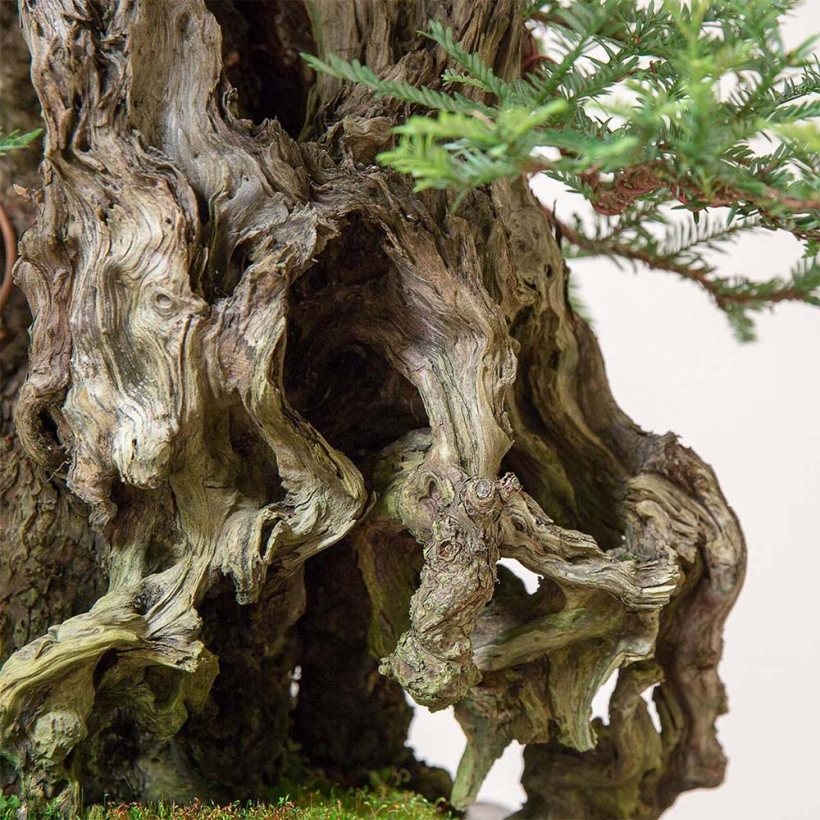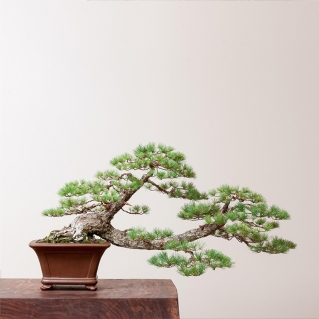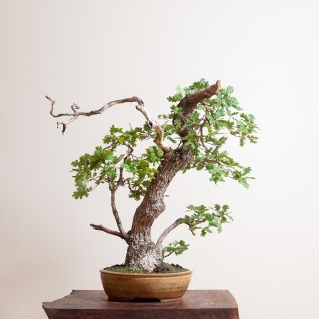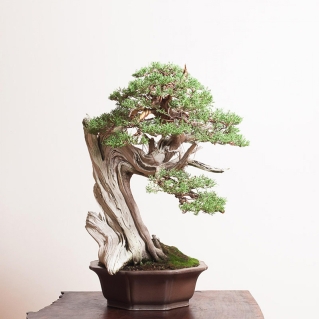Redwood Bonsai
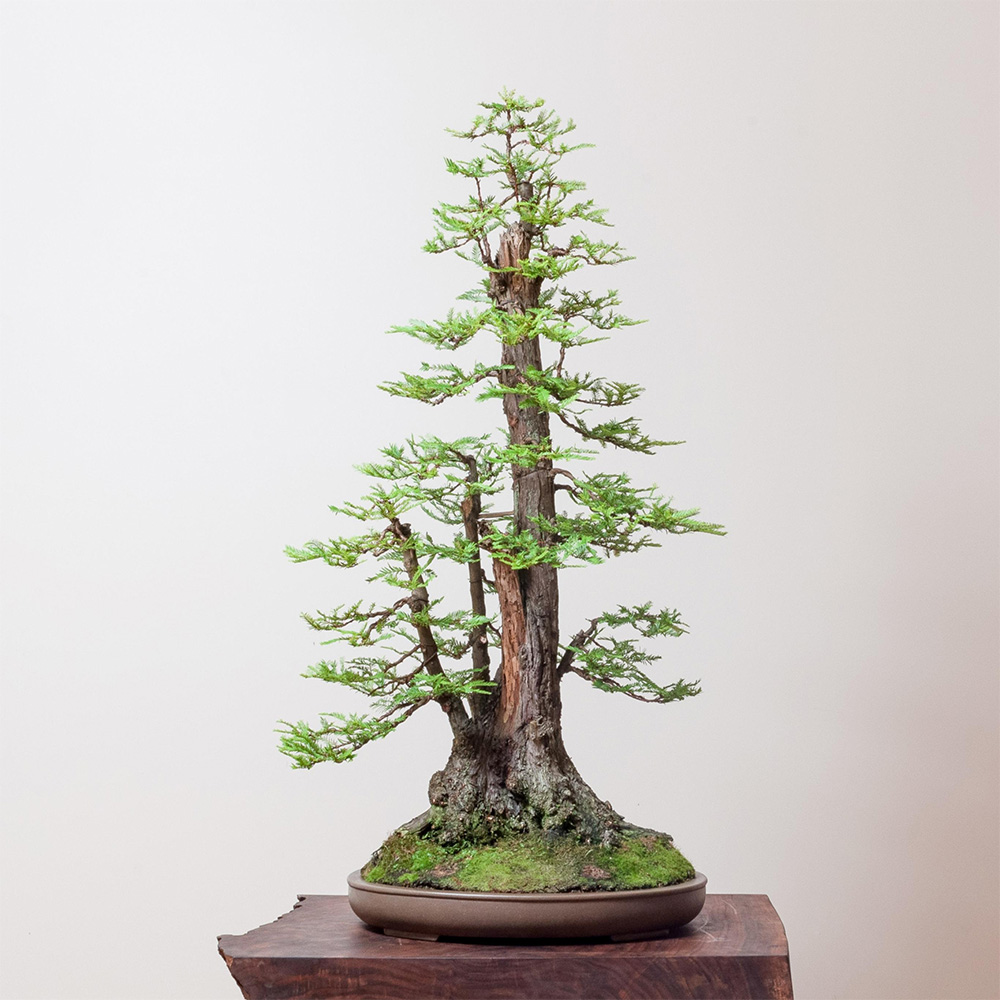
General Information
Redwoods — Sequoia sempervirens — are the most iconic North American native trees, representing the unlimited imagination and potential of the North American spirit.
The long foliage and needles of redwoods, along with their vigorous nature, make them easy to train and ideal for those just beginning to care for bonsai trees.

Caring for Redwood Bonsai
Watering
One of the most critical aspects of redwood bonsai care is understanding how and when to water the tree. Coastal redwoods are a coastal elongating species, meaning that this specific species loves water and prefers to stay moist — but not sopping wet.
While the roots of a redwood need a balance of water and oxygen, thoroughly watering your redwood bonsai is essential to keep the species thriving.
Be prepared to water your redwood bonsai every day, or every other day. Instead of choosing a “watering schedule,” we recommend checking the soil's moisture levels — if the top layer of soil is dry to the touch, it’s time to water your redwood.
Never let the root ball of your redwood dry out.
If you live in an area with relatively low humidity levels, mist the foliage mass of your redwood each time you water it.
Sun Exposure
Redwood bonsai trees should be kept in full sun if they are growing in temperate regions that have relatively high levels of humidity throughout the spring, early summer, and through fall. Exposure to full sun helps redwood bonsai maximize their tight, compact potential.
Temperature
Redwood bonsai trees can tolerate temperatures over 100°F as long as they are provided with sufficient shade cloth and protection from intense sunshine.
Redwoods do not tolerate freezing or temperatures below 32°F. Exposing your redwood to cold temperatures may result in the branches or roots dying back and losing significant portions of the tree.
If you live in a cold climate, your redwood should be sheltered, brought inside, or maintained in a greenhouse during the winter months.
Redwood bonsai can grow and survive in the shade, but this encourages the inner nodes to elongate, the foliage to get larger, and reduces the tree’s strength. Through the summer season, if you live in a climate that hits above 85 °F, your redwood will need to be under a 20% shade cloth to endure the heat.
An additional factor to consider about climate is the amount of humidity in the environment. The higher the temperature, and the lower the relative humidity, the heavier the shade cloth will need to be to empower the redwood to:
- Cool itself
- Maintain proper moisture levels; and
- Survive its light and sun requirements
Fertilizing
Your redwood bonsai tree needs an organic fertilizer when it is time to start the fertilization process.
The best time to fertilize a redwood bonsai tree is anytime from spring to fall to empower the tree overall and to promote:
- Branch length
- Strength
- Route recovery
Redwood bonsai trees do not need heavy fertilization. If you are trying to reach any developmental goals with your bonsai, a moderate amount of fertilization over the growing season is ideal.
On the contrary, if you’re trying to refine a redwood, fertilization should be withheld until the spring — this helps give you a much more refined production of growth, smaller needles, and shorter internodes. By fall, you can lightly fertilize your redwood bonsai.
Pruning
Redwoods generally grow upright, so pruning and training a redwood bonsai may be minimal — but they can be pruned once they have started to produce lignified growth or any wood tissue along the branches.
Wiring
Redwoods can be wired in the same seasons they are pruned, in the spring, early summer, or late fall/early winter — wiring a redwood during early to mid-fall can be catastrophic.
You should only wire your redwood if it is producing lignified woody growth.
Avoid wiring your redwood if the branches emerging from the trunk are still soft, fleshy, and green.
Repotting
Redwoods should be repotted in mid to late spring, as the buds swell and the tree becomes active.
Although redwoods have a robust root system, they are conifers, which means you’ll always need to leave some portion of the root system intact and never fully rid it of its soil. You can reduce the amount of soil mass by putting them in smaller containers and adding foliage.
Since coastal redwood bonsai have high moisture and nutritional requirements, using akadama soil particles while replanting is the best way to ensure that your redwood receives the proper nutrients and satisfies its unique water requirements.
Redwood bonsai trees have the capacity to thrive in a diversity of containers, both narrow, deep containers or shallow, wide containers — it truly depends on the aesthetic of your tree.
Once repotted, your redwood bonsai will benefit from shelter from intense sun and wind. You can help them reinvigorate their growth by misting the foliage regularly after repotting.
Propagation
Redwoods can be propagated from root cuttings, large branch cuttings, and through air layering methodology with high levels of success.
Pests/Disease
Redwoods are rarely affected by pests, with the exception of spider mites in arid environments.
When redwood bonsais are grown in their native environment, they do not suffer from many — if any — known pathogens. In containerized environments, on the other hand, redwoods may be affected by a pathogen called “red spot”. Simple fungicide applications can treat the disease on redwood bonsai trees.
Redwood Bonsai FAQS
Fertilization should be done spring through fall on a redwood bonsai tree. The exception to this is if you are trying to refine a redwood — in these cases, fertilization should be withheld through the spring season.
Organic fertilizers are considered an absolute necessity for redwood bonsais.
Absolutely!
Redwood bonsai trees thrive best outside but are tolerant of growing indoors if in the right conditions. The ideal environment for redwood bonsai trees involves optimal sunlight and humidity levels.
Pruning at the wrong time can cause the growth to start all the way back at the base of a branch. They should only be pruned when they have produced woody tissue along the branches.
Pruning should only be done during appropriate times of the year, typically during the spring before the flush of growth, during the summer after the flush hardens, or in late fall/early winter once the redwood sets its buds for the following year.
No, redwood bonsai trees are conifers and should never be bare-rooted when repotting.
